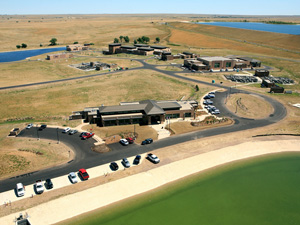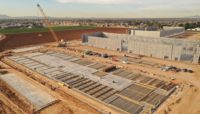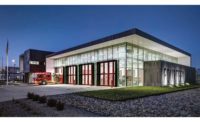The American Public Works Association, which just wrapped up its annual convention in Denver in mid-September, honored Aurora’s Prairie Waters project as one of its public works projects of the year nationwide for 2011.

Prairie Waters is part of a $1.1-billion, 10-year capital improvement project to reinforce the reliability of Aurora’s water system. It adds 3.3 billion gal. (10,000 acre-ft) annually to the city’s water supply—a 20% increase. The project is designed to meet Aurora’s water needs through 2020.
Water collected by 17 high-capacity alluvial wells drilled within 200 yd of the banks of the South Platte River in Weld County is sent first to the North Campus aquifer-recharge-and-recovery basin, then, via 34 miles of pipeline and three pump stations, to the Peter D. Binney Purification Facility north of Aurora Reservoir. Finally, purified water moves from Binney to the Robertsdale Station for distribution to residential customers.
CH2M Hill of Denver designed the North Campus and managed the overall project. MWH Americas Inc., Denver, designed the conveyance system (pipeline), and Brown & Caldwell, Golden, handled the Robertsdale Tank & Pump Station. Different contractors, including Garney Construction Inc., Western Summit Constructors Inc., Reynolds-Tierdael and S.J. Louis Construction of Texas Ltd., worked on the project. Portions of two segments parallel a 14-mile stretch of E-470.
Design work began in August 2005, construction in 2007. Construction wrapped up last year, followed by a requisite six-month startup and testing period. Budgeted for $754.8 million, the Prairie Waters Project came in well under that figure.
Dave Marciniak, public involvement representative with Aurora Water, said. “Just $426 million in bonds were sold initially in order to ensure that any debt incurred would not run higher than absolutely necessary.”
Marciniak said that “water collected by the source wells is not South Platte water per se,” but naturally filtered water from the alluvial beds below the river bottom. “The level of biological purification achieved in just this first filtration step is remarkable,” he said.
Water is then pumped into the aquifer-recharge-and-recovery basin, a second purifying sand-and-gravel zone at the 200-acre North Campus and recovered by a second series of wells along the basin rim.
After being piped from the North Campus to Pump Station 1, west of the river near Highway 7, the naturally filtered water passes under the South Platte. Forty-five-ft deep pits were dug on opposite banks to allow crews of 10 working 12-hour shifts to begin drilling the 78-in., 260-ft-long tunnel through impermeable blue claystone beneath the river. Work was completed in just seven days.
“The claystone proved to be fracture-free, a pleasant surprise that gave us a nice, clean hole through which to run our 60-in., urethane-coated water pipe,” said Darrell Hogan, project director with Aurora Water.
In all, 22 tunnels were drilled under different infrastructure components—primarily highways, railways, future utility lines and waterways. Tunneling operations posed the greatest risks of the entire project, including the threat of settling roadbeds and breached waterways that could flood the tunnels.






